We may receive a commission when you use our affiliate links. However, this does not impact our recommendations.
A customer asked me to make a Wierix try square for him this week, and because it’s silly to make just one wooden square, I’m making a batch of five this week and am documenting the process here on the blog.
If you don’t know what a Wierix square is, it’s an old style of try square that shows up in drawings of “The Childhood of Jesus” by Hieronymous Wierix, a late 16th-century book. I’ve made about 20 variants of these early wooden try squares and have the construction and truing process down pat.
Early squares could be made of any hardwood according to W.L. Goodman, and many woodworkers and carpenters preferred material that had been used in wine casks because it was well-seasoned and stable. (Note: Early wine casks could be enormous. I’ve seen one in Germany that was three stories tall – and it was on its side.)
We are fresh out of Medieval wine casks here in Kentucky, so I’m using some well-seasoned and straight-grained red maple. To make the handle, sometimes called the “stock,” first plow a 1/4” wide x 1/2” deep groove one one long edge of your board. I plow the groove on a wide piece first because it’s easier to hold wide wood in my face vise. After the groove is complete, rip off the longest section possible that is 2” wide and has quartersawn or rift grain. I managed a 5’-long stick.
You want a long stick because it’s faster and easier to cut the moulding on the stock on one long stick than on five short sticks, especially if you use moulding planes.
True up your stick with a jointer plane and then secure it to cut the moulding, which is traditionally called “sticking” the moulding. I have made about a dozen “sticking boards,” which are shopmade appliances that are handy for sticking moulding. It seems I leave my sticking boards at schools whenever I teach, so today I jimmied up the following setup with a couple battens and holdfasts.
When you cut moulding by hand, a lot of the pressure is lateral – you are pushing the moulding to the side as much as you are pushing it down. Hence the battens that press against the edge of the stick.
I cut a 1/4” square ovolo on two corners of my stock material. Any moulding profile will do.
Then crosscut the stock pieces to 11” wide and shoot all the ends.
When shooting the ends, first plane a small relief on the edge that has the groove. Then flip the piece over and plane into the moulding. Using this two-step procedure avoids spelching the moulding.
Tomorrow: Making the blades.
— Christopher Schwarz
P.S. If you like traditional wooden squares, check out my plans for an 18th-century wooden try square from A.J. Roubo’s “l’Art du Menuisier.” The plan is available for download in ShopWoodworking.com here.
Here are some supplies and tools we find essential in our everyday work around the shop. We may receive a commission from sales referred by our links; however, we have carefully selected these products for their usefulness and quality.



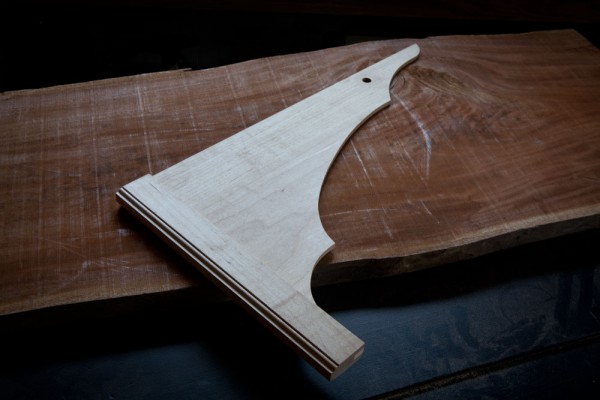
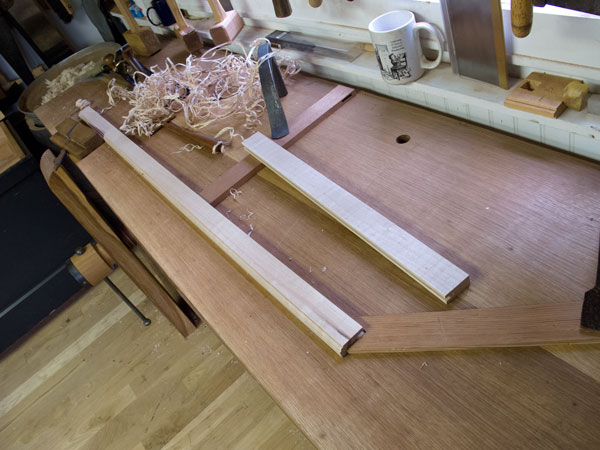
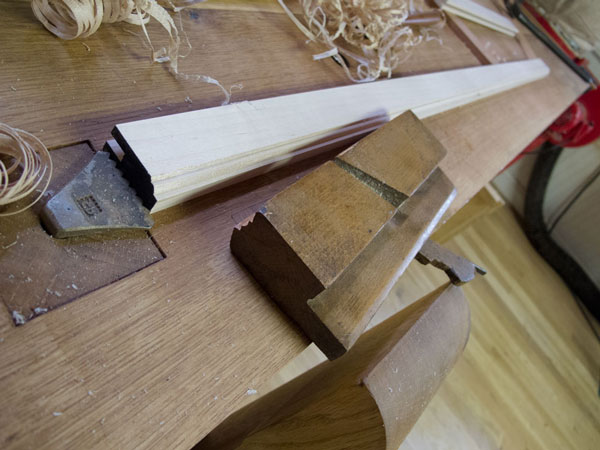

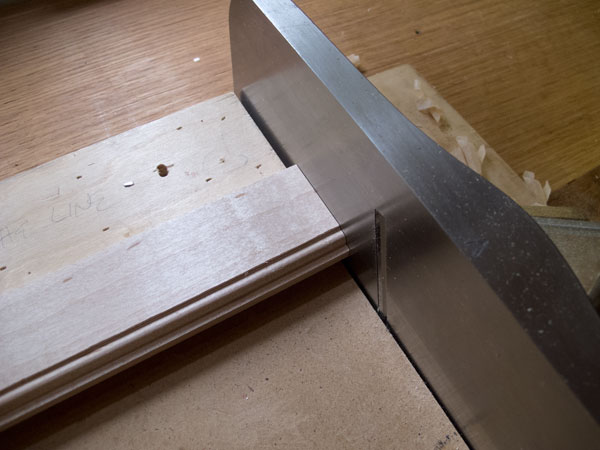
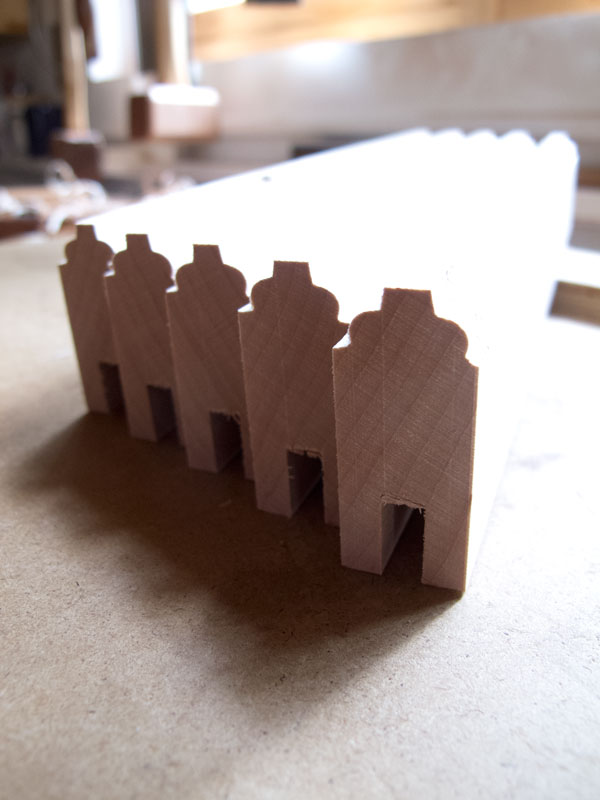






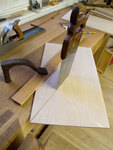
While this has little to do with woodworking, such seasoned wooden barrels make terrific dog houses for outside and hunting dogs…the rain runs off quickly and the fumes cause flees and wood ticks to leave the territory. Leave the bung in the hole with the bung hole rotated completely toward the ground. Take two short 2 x 6’s, cut radiused scallops to fit the front and rear contours of the barrel. If you have several dogs, use one barrel per dog and use 2 long lengths of 2×6 pairs to accommodate several barrels. Layout the door opening in one end of the barrel. Nail a wood cleat on each side of the laid out dooer. Drill a 1/2 hole in each of the laid out door corners. Saw out the doorway in the reinforced end of the barrel. In the wintertime, tack a piece of heavy canvas over the door opening. Keep fresh straw in the barrels. Change out the straw when damp. This is cheap and works like a charm. The dogs love it and so will you! I live in NC and am a former member of the Ohio Valley Beagle Club.
The obvious follow-up…. What can you make from used Kentucky Bourbon barrels (besides Scotch….)?
This video has it all :
* furniture design
* decorating tips
* Die Federmaus
https://www.youtube.com/watch?v=QKadJQ64v-E
Why no video? This would be a perfect project for a video.